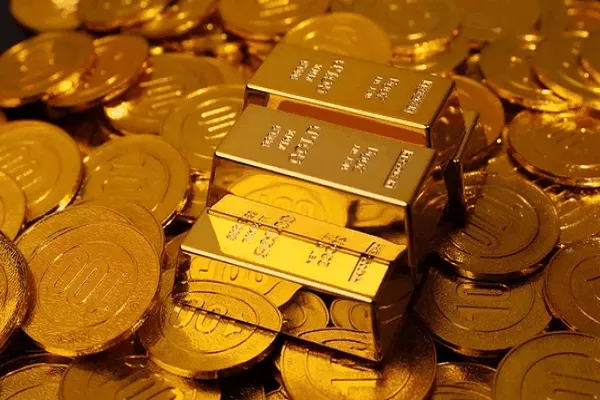In the realm of Asian trading on Tuesday, gold prices experienced a slight decline, despite the backdrop of heightened unrest in the Middle East. Attention also remained fixated on the potential for interest rate reductions by the Federal Reserve.
The previous day saw a surge in gold prices following Israel’s series of strikes against Rafah in Southern Gaza, a development that complicated the ongoing ceasefire negotiations with Hamas. Reports indicated minimal progress in these discussions.
Further bolstering gold was the speculation surrounding potential interest rate cuts in the United States, particularly after disappointing nonfarm payrolls data on Friday led to significant losses in the dollar. However, the greenback showed signs of recovery on Tuesday.
As of 01:14 ET (05:14 GMT), spot gold experienced a marginal decline of 0.1%, reaching $2,322.65 per ounce, while gold futures expiring in June stabilized at $2,330.95 per ounce.
Amidst the Israel-Hamas tensions, gold attracted some safe-haven demand. Israel’s strike on Rafah hinted at an escalation in the ongoing conflict, offering little hope for de-escalation in the region. This, in turn, drove up demand for gold, pushing its value past the $2,300 mark. Additionally, the lack of progress in ceasefire talks contributed to this safe-haven appeal.
Despite these factors, gold remained more than $100 below its record highs witnessed in April, during heightened tensions between Iran and Israel, which had spurred significant safe-haven demand. However, tensions did not escalate into a full-blown conflict, leading to sharp declines in gold prices.
The focus also shifted towards potential rate cuts by the Federal Reserve. The introduction of a monthly quota in August of the previous year on unprocessed gold imports aimed at reducing the current account deficit was highlighted by the Treasury and Finance Ministry.
According to the ministry, the introduction of this quota led to a significant decline in unprocessed gold imports, contributing positively to the current account balance. The ministry anticipated this trend to persist in the coming period.
The dollar’s stabilization following last week’s losses tempered any major gains in gold as market participants awaited further cues on interest rates from the Federal Reserve. Remarks from Federal Open Market Committee (FOMC) members Thomas Barkin and John Williams suggested that while rate cuts were still on the agenda for the central bank, more convincing evidence of easing inflation was required.
In other precious metal news, platinum futures saw a modest rise, while silver futures experienced a slight decline. Among industrial metals, copper prices remained mixed but continued to hover near two-year highs, with attention focused on supply constraints amid Chinese production cuts and sanctions on Russia.

